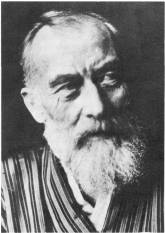Erwin Bälz
Erwin Bälz | |
|---|---|
 Erwin Bälz | |
| Born | 13 January 1849 |
| Died | 31 August 1913 (aged 64) |
| Nationality | German |
| Occupation | Medicine, anthropology, foreign relations of Japan |
| Known for | Foreign advisor to Meiji Japan |

Erwin Otto Eduard von Bälz (13 January 1849 – 31 August 1913) was a German internist, anthropologist, personal physician to the Japanese Imperial Family and cofounder of modern western medicine in Japan.
Biography[]
The son of a contractor, Bälz was born in 1849 in Bietigheim-Bissingen in Germany. He attended grammar school in Stuttgart and studied medicine at University of Tübingen. He graduated at the age of 23, and subsequently worked at the medical department of the University of Leipzig in 1869, and served as a medic in the German army during the Franco-Prussian War in 1870. He returned to the University of Leipzig in 1875.
While at Leipzig, he treated a Japanese exchange student, which led to the offer by the Japanese government of a two-year contract with the Medical College of Tokyo Imperial University in 1876. Bälz’s contract was renewed several times, and he ended up spending 27 years in Japan, the longest of any of the Oyatoi gaikokujin advisors. In 1881, he married a Japanese woman, Toda Hanako, and had four children.
In the summer of 1899, Bälz visited the Korean capital Seoul and Busan and undertook ethnological investigations. From 22 April to 3 July 1903, he was again in Korea and, together with Richard Wunsch, undertook an expedition into the interior of the country.
In 1902, he was appointed personal physician-in-waiting to Emperor Meiji and the Imperial household of Japan.
Bälz taught more than 800 students in Western medicine during his tenure at the Tokyo Imperial University. During his stay in Japan, he treated some of the most influential men in the Meiji government, including Prime Ministers Itō Hirobumi and Yamagata Aritomo. On Bälz's initiative, the volcanic springs of Kusatsu (200 km away from Tokyo) were transformed into the most successful hot spring resort of Japan. He compared the area with the European spa resort of Karlsbad, and felt that mountainous air, as well as the clear waters, was very conducive to health.
Another medical contribution was the discovery and naming of "Mongolian spot". Finding an unrecorded feature of blue spots in Japanese babies, he thought these spots were characteristic of people of Mongolian origin.[1][2][3]
In 1905, Bälz returned to Germany with his family.[4] In Stuttgart, late in the summer of 1913, Bälz succumbed to heart disease.
Legacy[]
Bälz was also an ardent art collector; the majority of the Japanese works collected by him are located at the Linden Museum in Stuttgart. A stone sculpture at his alma mater, University of Tübingen is a reminder of his contributions to Japanese medical science. In 1961, a sister city relationship between Kusatsu and Bietigheim-Bissingen was established.
After his death, his diary Das Leben eines deutschen Arztes im erwachenden Japan (1931, tr. The Diary of a German Doctor in Awakening Japan) was published, giving unique insights into Japan in the Meiji era.
In 1883, while staying at the Fujiya Hotel in Miyanoshita, Hakone, Bälz noticed that his maid's hands were chapped. He made a mixture of glycerin and water for her, which was later sold widely in Japan under the name of Bälz Water. It is also listed in the Japan Pharmacopoeia.
During his time in Japan, Bälz became a fan of judo, and is credited with introducing the sport to Germany.
In the year 2000, a commemorative museum honoring Bälz was erected in Kusatsu.[5]
References[]
- ^ Baelz, E. Die koerperlichen Eigenschaften der Japaner. (1885) Mittheil.d.deutschen Gesell. f. Natur- und Völkerkunde Ostasiens. Bd. 4, H. 32
- ^ Circumscribed dermal melanocytosis (Mongolian spot),(1981) Kikuchi I. Inoue S. in "Biology and Diseases of Dermatal Pigmentation", University of Tokyo Press
- ^ González, John Morán; Lomas, Laura (2018). The Cambridge History of Latina/o American Literature. Cambridge University Press. p. 135. ISBN 9781316872208.
- ^ Erinnerungen der Familie Bälz European Karate
- ^ Guide to Kusatsu
Bibliography[]
- Baelz, Erwin. Awakening Japan: The Diary of a German Doctor. Indiana University Press (1974). Translated by Eden and Cedar Paul. ISBN 0-253-31090-3.
- Fujitani, T. Splendid Monarchy: Power and Pageantry in Modern Japan. University of California Press; Reprint edition (1998). ISBN 0-520-21371-8.
- Keene, Donald. Emperor Of Japan: Meiji And His World, 1852–1912. Columbia University Press (2005). ISBN 0-231-12341-8.
- Hasegawa, Akio. Hakone that Prof. Bälz loved
External links[]
| Wikimedia Commons has media related to Erwin Bälz. |
- 1849 births
- 1913 deaths
- People from Bietigheim-Bissingen
- German expatriates in Japan
- Foreign advisors to the government in Meiji-period Japan
- Foreign educators in Japan
- People from the Kingdom of Württemberg
- German military doctors
- German art collectors
- 19th-century art collectors
- 20th-century art collectors